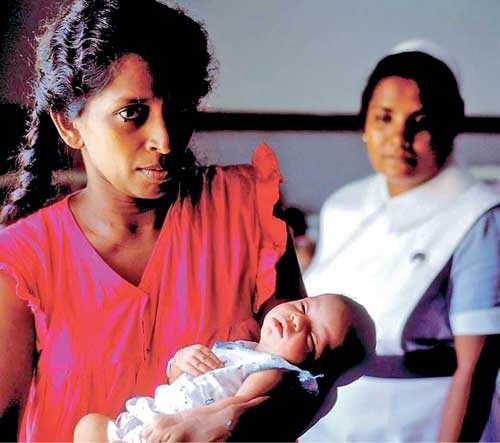Tuesday Apr 22, 2025
Tuesday Apr 22, 2025
Monday, 12 August 2019 22:41 - - {{hitsCtrl.values.hits}}
Healthcare is something that touches all of us, given the most basic human goal which is that we all want to live healthy lives. The World Health Organisation defines that “health is a state of complete physical, mental and social well-being and not merely the absence of disease or infirmity”.

Many factors combine together in terms of determining the health of a person or community while the circumstances and environment play a major role in experiencing the state of health.
To some extent factors like genetic, educational level, family structure, behaviours, norms and beliefs all have a considerable impact on the health status of an individual or family, whereas the socioeconomic environment is considered to be the major influential factor in determining the state of health in humans.
Scientific research reveals that higher income and social status are linked to better health. The greater the gap between the richest and poorest people, the greater the differences in health referred to as healthcare inequalities.
Universal healthcare
Universal healthcare is a concept adopted by the United Nations Sustainable Development Goal number three which ensures that people should have access to quality medical services to improve health and in an equitable manner without having any kind of financial hardship and barriers. It ensures equal healthcare to every person, no matter who they are or where they live. Unfortunately, many developing countries still struggle to accomplish healthcare equality among its citizens due to various reasons.
Healthcare inequality
Healthcare inequality is when one group of people in an economy are in much worse health than another group. Healthcare inequality is a global issue, the economically marginalised countries are victimised heavily to this worst-case scenario. Many researchers found out that income of a household is positively correlated with the better health outcome.
How the healthcare system is financed
A good health system delivers quality services to all people, when and where they need them. Although the exact configuration of services varies from country to country, in all cases it requires a robust financing mechanism. Even though healthcare financing to its optimal level is inevitable to any country to fulfil equitable healthcare, financing healthcare has emerged as a prominent challenge locally as well as globally due to various factors.
Most typically, healthcare is financed around the world through five primary methods such as general taxation of the state, social health insurance, private health insurance, out-of-pocket payments and donations to charities. Many developing countries adopt healthcare financing through general taxation of the state while developed countries have diverted to social and private health insurance with minimal contribution from public funding.

How the healthcare system of Sri Lanka is financed
In Sri Lanka, the Government plays a major role in the healthcare system in terms of not only making policy but also in the delivery. As a mainstream health service provider, the Government delivers healthcare service as free at the point of use to all Sri Lankan citizens, in the meantime the private sector also plays a considerable role in the business model.
In the context of Sri Lanka, healthcare cost is mainly financed by a combination of Government revenue, out-of-pocket payments of households and minimal amount of private health insurance. As a mainstream healthcare provider the Government accounts for 55% of total expenditure, 40% is covered by out-of-pocket payments of the public and the rest 5% is covered by health insurance and other sources.
In 2014, Sri Lanka’s total healthcare expenditure just was 3.5% of GDP which is comparatively very low with developed countries. When we look around the world the USA spends 17.9%, the UK spends 17.2% and France spends 11% of GDP for healthcare needs of the state.
Health challenges Sri Lanka faces
Sri Lanka records impressive healthcare indicators similar to developed countries, however disparities and inequalities remain. Disparities between districts in terms of healthcare human resources, technology and infrastructure remains quite high, as a result people who live in the peripheral part of the country have to come to cities to obtain many special and advanced treatment among many difficulties.
Due to demographic changes, the ageing population is increasing year by year in Sri Lanka. According to the World Bank, by 2041, one out of every four persons is expected to be an elderly person, making Sri Lankans the oldest population in South Asia. This trend predicts the health security challenges of Sri Lanka as the elderly require special and frequent medical attention on various aspects.
Changes in food and lifestyle lead to the spread of non-communicable diseases such as cardiovascular disease, diabetes, kidney disease and cancer, as a result healthcare demand is high. Further, road traffic accidents and epidemiological outbreak of infectious diseases like dengue, influenza and so on put extreme pressure on the healthcare system of Sri Lanka year on year.
As a consequence, the Government of Sri Lanka carries an extreme financial burden, since the Government is the mainstream healthcare provider. Sri Lanka really struggles to face the increasing number of health challenges in terms of financing and delivery. It is clear that modern technologies and medical specialties are limited only to urban areas and patients who are treated at State hospitals are still required to obtain certain drugs and medical tests at their own expense as out-of-pocket payments, Government hospitals remain heavily congested due to increasing number of patients, huge waiting list of surgeries for many years and so on.
Increasing the annual budget on healthcare expenditure is considered impossible to address the growing healthcare challenge due to the underperforming economy for several decades and extreme resource scarcity in other sectors. As a result of inability of the Government to meet the increasing healthcare demand, ordinary citizens are being pushed to out-of-pocket payments to obtain medical service, which results in a major financial challenge in the economy at the household level. According to the Sri Lanka National Health Account 2013, healthcare is financed by nearly 40% via the out-pocket payment of citizens of the country while nearly 55% is fulfilled by the Government.
This increased tendency of out-of-pocket payments to obtain healthcare is a risky to any developing country; this results in uncertainty at the house level and leads to a number of social issues. Therefore, this challenge must be addressed promptly with a proper alternative approach to have the healthiest Sri Lanka.
The way forward
Winston Churchill used to say: “Healthy citizens are the greatest asset any country can have.” Therefore, an effective healthcare system with an appropriate financing model is the top priory for any country to have healthy citizens.
It is a high time Sri Lanka thinks about an alternative healthcare financing model with minimal pressure to the Government and poor segment of community to achieve universal healthcare by addressing the evolving healthcare challenges.
(The writer is Assistant Manager – Health Insurance of Union Assurance PLC.)
Discover Kapruka, the leading online shopping platform in Sri Lanka, where you can conveniently send Gifts and Flowers to your loved ones for any event including Valentine ’s Day. Explore a wide range of popular Shopping Categories on Kapruka, including Toys, Groceries, Electronics, Birthday Cakes, Fruits, Chocolates, Flower Bouquets, Clothing, Watches, Lingerie, Gift Sets and Jewellery. Also if you’re interested in selling with Kapruka, Partner Central by Kapruka is the best solution to start with. Moreover, through Kapruka Global Shop, you can also enjoy the convenience of purchasing products from renowned platforms like Amazon and eBay and have them delivered to Sri Lanka.
Discover Kapruka, the leading online shopping platform in Sri Lanka, where you can conveniently send Gifts and Flowers to your loved ones for any event including Valentine ’s Day. Explore a wide range of popular Shopping Categories on Kapruka, including Toys, Groceries, Electronics, Birthday Cakes, Fruits, Chocolates, Flower Bouquets, Clothing, Watches, Lingerie, Gift Sets and Jewellery. Also if you’re interested in selling with Kapruka, Partner Central by Kapruka is the best solution to start with. Moreover, through Kapruka Global Shop, you can also enjoy the convenience of purchasing products from renowned platforms like Amazon and eBay and have them delivered to Sri Lanka.